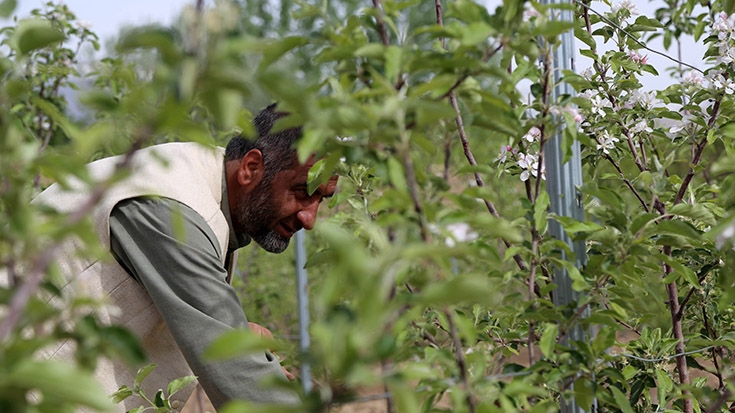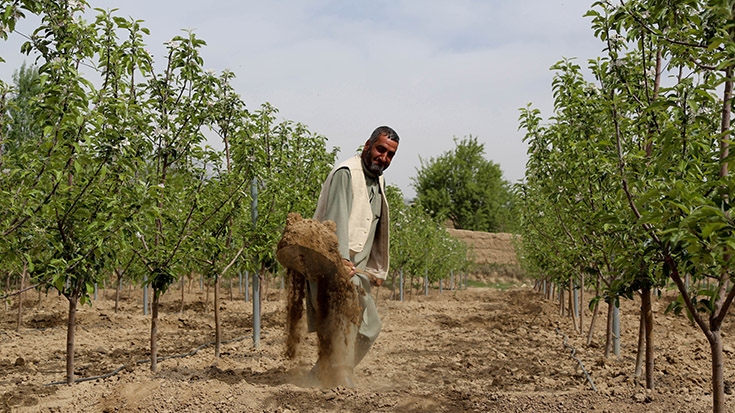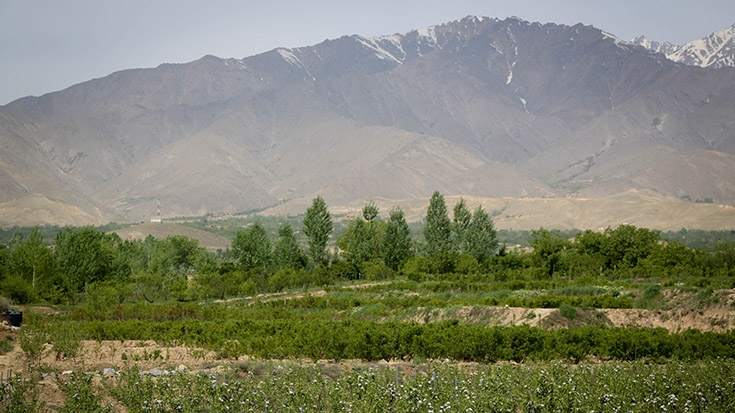Wasay established the high density orchard through a partnership with the National Horticulture and Livestock Project (NHLP), implemented by the Ministry of Agriculture, Irrigation and Livestock with a $100 million grant support from the Afghanistan Reconstruction Trust Fund (ARTF).
NHLP contributes to the overarching goal of increased productivity and overall production of horticultural products, and improved animal production and health. The technical strategy for achieving this objective is based on the delivery of extension and investment support through strengthened systems. These activities are currently implemented in 120 districts in 23 target provinces, numbers that may grow as conditions warrant.
“The support of NHLP has been tremendous,” Wasay says. With the project’s support, his harvest has seen an unprecedented yield, and with the quality of the apples also higher than ever. “The taste of the apples was excellent and the color was beyond words,” he adds.
Model farms serve as examples
Each year, NHLP supports the creation of about 120 to 160 new orchards in the Shakardara district. Officials say that the operational expenses of these plots are shared equally between NHLP and orchard owners.
“We provide the farmers tools, such as pruning shears, saws, ladders, pesticide sprays, and boxes for fruit packing,” says Zaal Mohammad Amerkhail, the local NHLP supervisor in the district. “The farmers themselves also contribute up to 50 or 75 percent of the total cost of these tools.”
Amerkhail says that the project also establishes model farms and orchards to serve as examples, such as the trellis construction on Wasay’s apple orchard, which was the first model orchard established in Shakerdara. Whereas most farmers contribute to the operational expenses of their plots in the project, NHLP covers all the costs associated with the establishment of these promotional orchards.
The project has also set up a group of 34 farmers who periodically come together to discuss important topics and share experiences and best practices. NHLP employees teach participants important lessons about modern farming and horticultural issues.
NHLP officials believe that the expansion of such orchards and farms has the potential to increase farmer income, something Wasay constantly emphasizes.
Wasay says that this year, each of the small trees planted under the project produced five to six kilograms of apples. These apples were collected just as the Afghan apple season finished in markets across the country. In addition to increasing yield, these orchards have the potential to extend the local apple season.
“After the end of the Afghan apple season, apples are imported from overseas, because local apples are no longer available in national and local markets,” Wasay points out. “Through the establishment of orchards that extend the regular apple season, we are able to extend local production, and thus compete with the world.”



